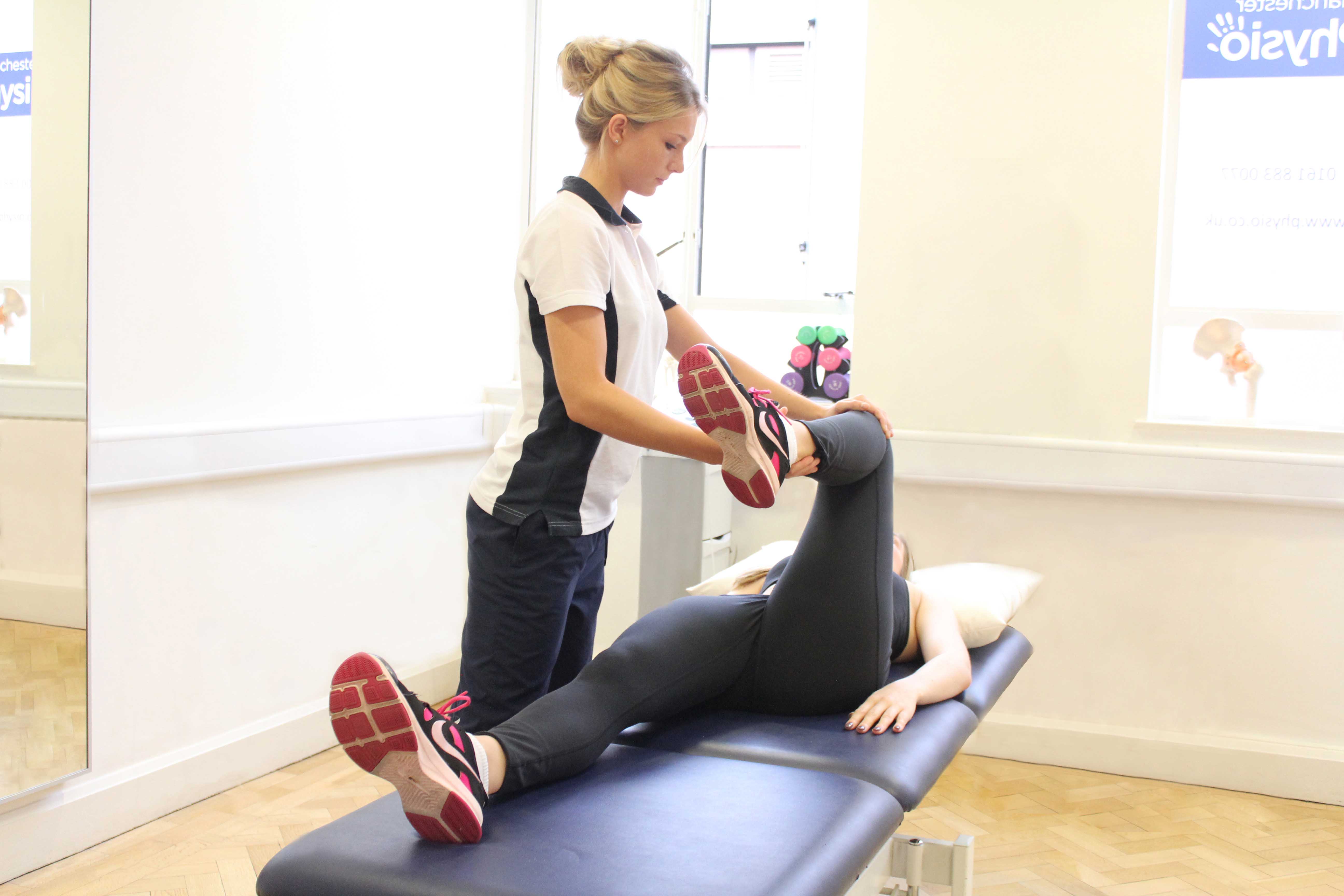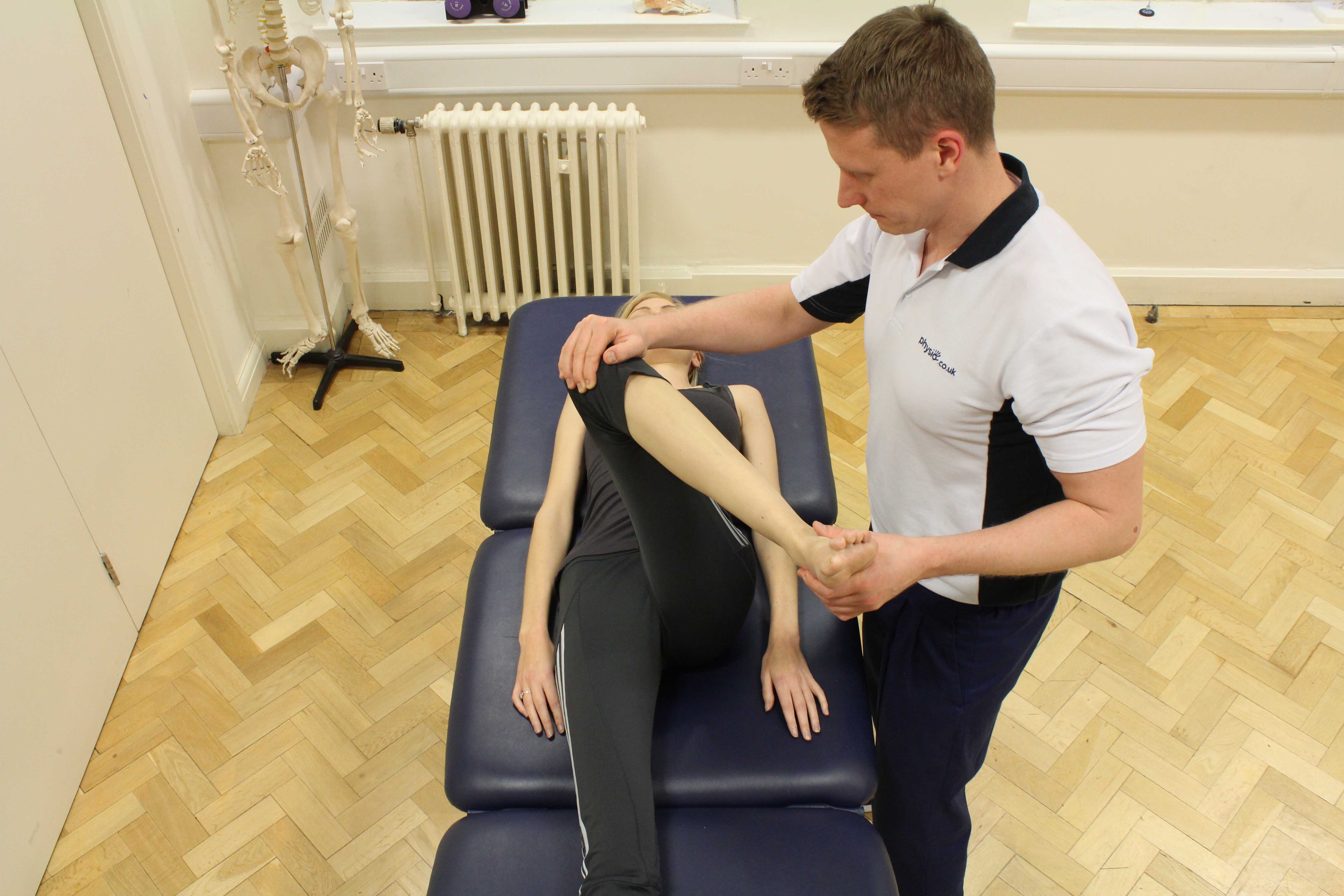What is osteochondritis dissecans?
Osteochondritis dissecans is a condition during which parts of the joint cartilage and subchondral bone (bone under the cartilage) is separated from the remaining bone. The most common place for this to happen is at the medial femoral condyle. Other joints include the ankle, elbow and shouler. Physiotherapy is a successful treatment for osteochondritis dissecans.
How does osteochondritis dissecans happen?
The exact cause of osteochondritis dissecans is unknown although it is thought to be linked to a previous injury or a poor joint blood supply.
 Above: Therapist performing mobilisations on the patella, knee joint and surrounding connective tissue.
Above: Therapist performing mobilisations on the patella, knee joint and surrounding connective tissue.What are the symptoms of osteochondritis dissecans?
A key symptom of osteochondritis dissecans is a dull ache around the site of injury. This can be in addition to swelling and stiffness of the affected joint which will restrict the movement in that area. Other symptoms include:
What should I do if I have osteochondritis dissecans?
A professional opinion should be gained first and this may be accompanied with a series of tests such as X-rays and MRI scans to accurately diagnose the condition. Surgery may be advised if the condition is long standing or has a big impact on your life. The operation is likely to be arthroscopic which is a type of keyhole surgery used to tidy and smooth over the affected joint surfaces to reduce the pain.
What shouldn’t I do if I have osteochondritis dissecans?
Do not ignore your symptoms if you suspect you may have osteochondritis dissecans. You should try to avoid placing too much weight through the injured joint as this will delay healing.
 Above: Therapist performing knee assessment
Above: Therapist performing knee assessmentPhysiotherapy treatment following osteochondritis dissecans.
Physiotherapy is an important part of your recovery if you require surgery or not. Your programme will be discussed with you with your physiotherapist and will be tailored to your condition and goals. Cryrotherapy is an essential part of your treatment following surgery as this will reduce any swelling. Other options are:
Could there be any long-term effects from osteochondritis dissecans?
If physiotherapy is started as soon as possible, long-term effects of osteochondritis dissecans should be minimal. It is vital that your rehabilitation is gradually progressed and personalised to your condition and to reduce the risk of re-injury.
To arrange a physiotherapy assessment call Physio.co.uk on 0330 088 7800 or book online.

 0330 088 7800
0330 088 7800

































